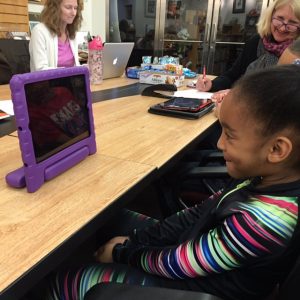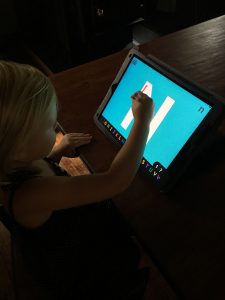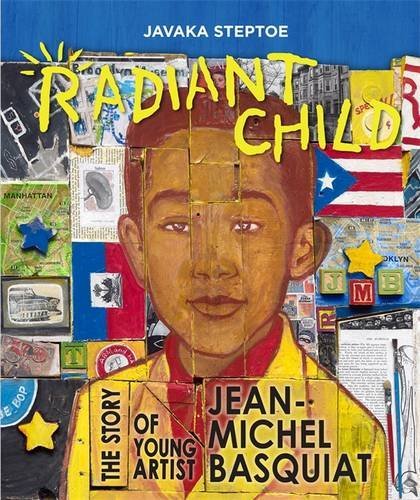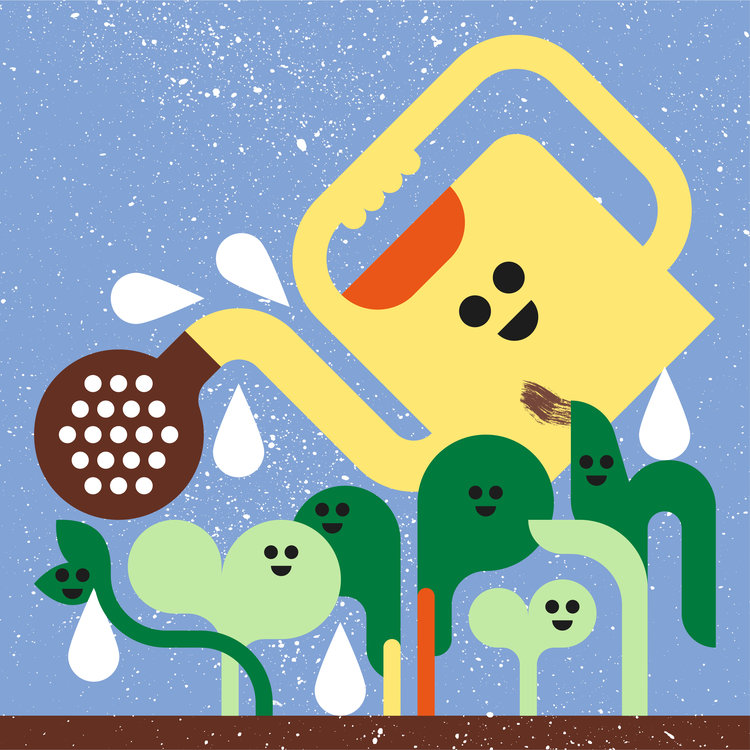
Children’s literature is not known for its diversity—either in terms of diverse characters within books, diverse authors and illustrators, or diverse staff within the publishing industry. Nancy Larrick’s famous article, “The All White World of Children’s Books,” was published in 1965, and sadly, the situation is not that different today. Yet those responsible for putting books in the hands of children know how important it is that books for young people provide what Rudine Sims Bishop calls “mirrors, windows, and sliding glass doors.” In a 2014 New York Times article, celebrated author Walter Dean Myers pointed out that of the 3,200 children’s books published in 2013, only 93 were about African Americans. In April 2014, young adult authors Ellen Oh and Malinda Lo tweeted about the lack of diversity in Children’s Literature, using the hashtag #weneeddiversebooks. Their conversation launched a movement.
In summer 2014, Marianne Martens participated in a panel of librarians presenting apps at the American Library Association’s annual conference. When she was putting together her list of recommended apps for the presentation, she realized the app business mirrored the publishing industry—there was a serious lack of diverse apps to choose from. Martens wrote a blog post for the ALSC blog, and later, was asked to join the Kids Inclusive and Diverse Media Action Project, or KIDMAP (formerly known as “Diversity in Apps”) as a founding board member. In 2015, Design Professor Gretchen Rinnert, from Kent State University, was putting together a seed grant for an iOS alphabet app for preschoolers and asked Martens to participate.
Gretchen Rinnert was inspired to create the Energetic Alpha app because she had become frustrated looking for quality educational apps in the Apple Store for her own children. While many apps claimed to be both “high-quality” and “educational,” after examining many of them, she found that these terms were being very loosely defined. In the case of “free” apps, this perfect price point (from the consumer’s perspective) often comes with annoying in-app advertising, many security and privacy issues, and typically, the user must pay for app upgrades in order to unlock the most interesting interactive or educational features.

Photo credit: Lucy Junior
Energetic Alpha is a learning app that helps preliterate children learn to recognize letters in the English language, practice proper handwriting skills, and build their vocabulary of verbs. The app is essentially an interactive alphabet book that helps children learn how to write letters through responsive and animated feedback. If a child writes a letter backwards, the system responds by providing both audio feedback and visual cues for correction. Then when the child is successful, the app plays a video of a corresponding verb: for example, A is for appear, B is for build, and C is for camouflage, and so forth.
The design team wanted to create an app that was high-quality, educational, and inclusive. For us, inclusivity occurs on two levels—first in terms of depicting diverse children and voices within the app, and second, in terms of ensuring that our team of co-design kids represented a diverse group of individuals.
In 2016, Alaskan librarian Claudia Haines created an 11-question rubric to help parents, teachers, and librarians identify and evaluate quality digital content for children. In 2018, the KIDMAP team enlisted a team of experts to publish an expanded rubric to include criteria for finding material that is “inclusive, equitable, and accessible”. While both Haines’ rubric and the KIDMAP rubric are intended as tools for evaluation, we used them as tools for informing both the app’s design and the methodology in our study.

In order to create Energetic Alpha, we developed our child-centered methodology, which borrows from Allison Druin’s cooperative inquiry and Elizabeth Sanders co-creation. We also intentionally used guidelines from KIDMAP’s DIG Checklist, making sure that diverse children appear within the app, and in our user-study group.
Since our app was not a storytelling app, some of the DIG Checklist questions were not relevant to our project. But there was other criteria that we could address, such as:
- Are characters diverse in their culture, ethnicity, language, gender, age, social classes, physical features, sexual orientation, and ability, reflecting today’s diverse families?
- Are diverse characters meaningfully integrated as individuals?
Despite our efforts, our study had many limitations, and only represents baby steps toward inclusive app design. With a research and design team that was entirely Caucasian, we failed at one criteria from the DIG Checklist:
- Who are the members of the creative team? Who is the author, illustrator, developer, educational or cultural consultant?
In addition, our user study was small, which means that our results are not generalizable. Despite this, we hope that our efforts towards inclusive app design will encourage others to consciously and automatically embed diversity and inclusion into their own app design. We know that we will.
References:
Druin A. (2005). What children can teach us: Developing digital libraries for children with children. The Library Quarterly, 75(1): 20-41.
Larrick, N. (1965). The all-white world of children’s books. Saturday Review, 48(11), 63-65.
Martens, M., Rinnert, G. C., Andersen, C. (2018, December). Child-centered design: Developing an inclusive letter writing app. Frontiers in Psychology. (Special edition on Human Computer Interaction: Interactive Digital Technologies and Early Childhood). Front. Psychol. | doi: 10.3389/fpsyg.2018.02277
Sanders, E. (2008). Co-creation and the new landscapes of design. CoDesign: International Journal of CoCreation in Design and the Arts 4(1): 5-18.
Sims Bishop, R. (1990). Mirrors, windows, and sliding glass doors. Perspectives, 1 (3), ix–xi.
 Marianne Martens, Ph.D. is Associate Professor at Kent State University’s School of Information. Her research interests in the area of “digital youth” converge at the intersection of books and technology in new literary formats and include the impact of digital reading experiences and the multi-literacies required to interpret non-linear, multimodal materials. You can read more about her work at mariannemartens.org.
Marianne Martens, Ph.D. is Associate Professor at Kent State University’s School of Information. Her research interests in the area of “digital youth” converge at the intersection of books and technology in new literary formats and include the impact of digital reading experiences and the multi-literacies required to interpret non-linear, multimodal materials. You can read more about her work at mariannemartens.org.
 Gretchen Caldwell Rinnert, M.G.D. is an associate professor in the School of Visual Communication Design at Kent State University. She teaches interaction design, motion design, visual ethics, and design theory. As a researcher, her work focuses on the intersection of design and education, classroom participation, and tools that aid in understanding and comprehension. Since 2015 she has been working on a suite of tools that help preliterate children learn letters and numbers. Rinnert is also one of the founding members of the MODE Summit, a motion design educators summit that takes place every two years and is a peer-reviewed, international event. You can visit her website at http://www.flyingtype.com
Gretchen Caldwell Rinnert, M.G.D. is an associate professor in the School of Visual Communication Design at Kent State University. She teaches interaction design, motion design, visual ethics, and design theory. As a researcher, her work focuses on the intersection of design and education, classroom participation, and tools that aid in understanding and comprehension. Since 2015 she has been working on a suite of tools that help preliterate children learn letters and numbers. Rinnert is also one of the founding members of the MODE Summit, a motion design educators summit that takes place every two years and is a peer-reviewed, international event. You can visit her website at http://www.flyingtype.com




